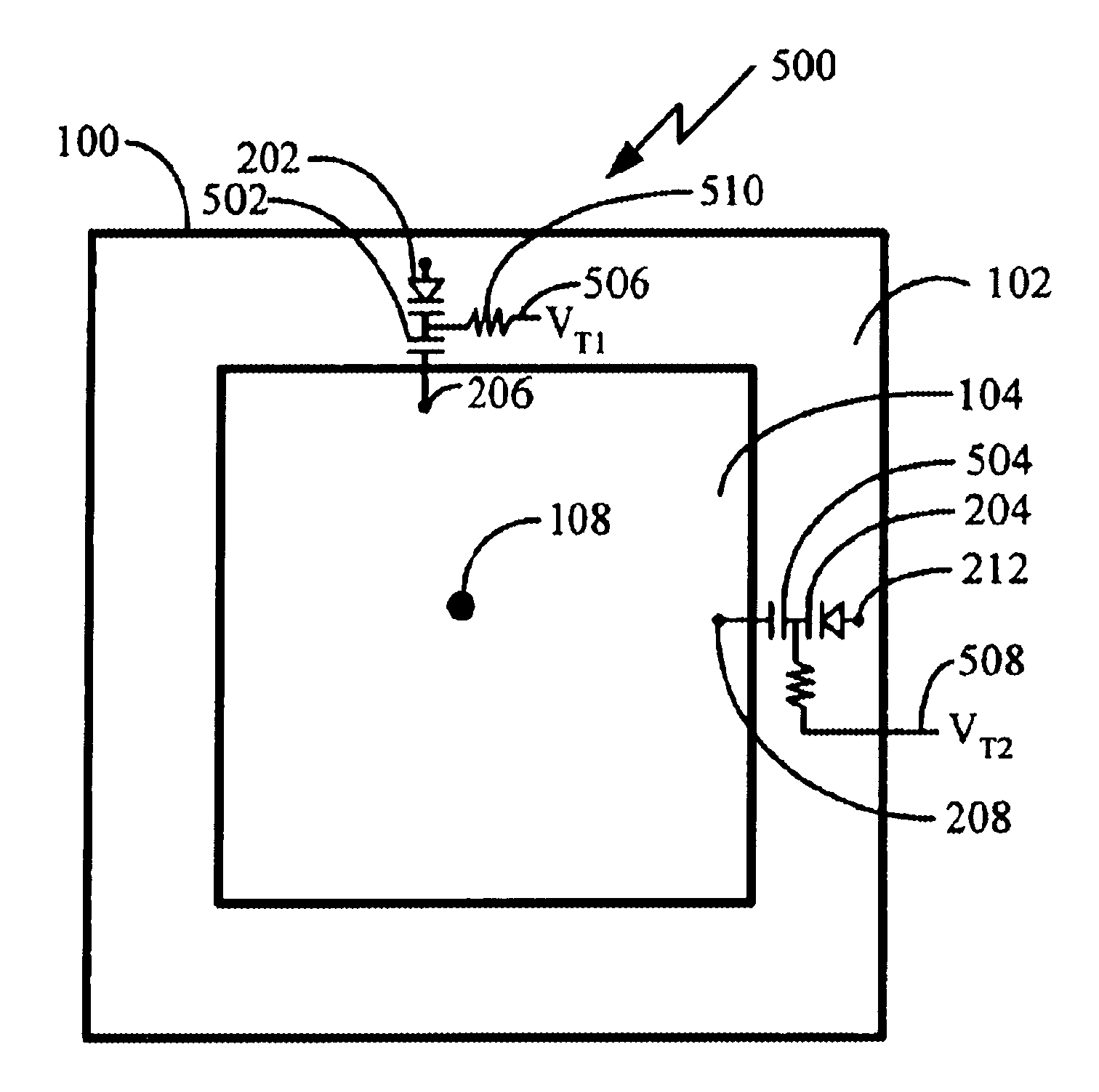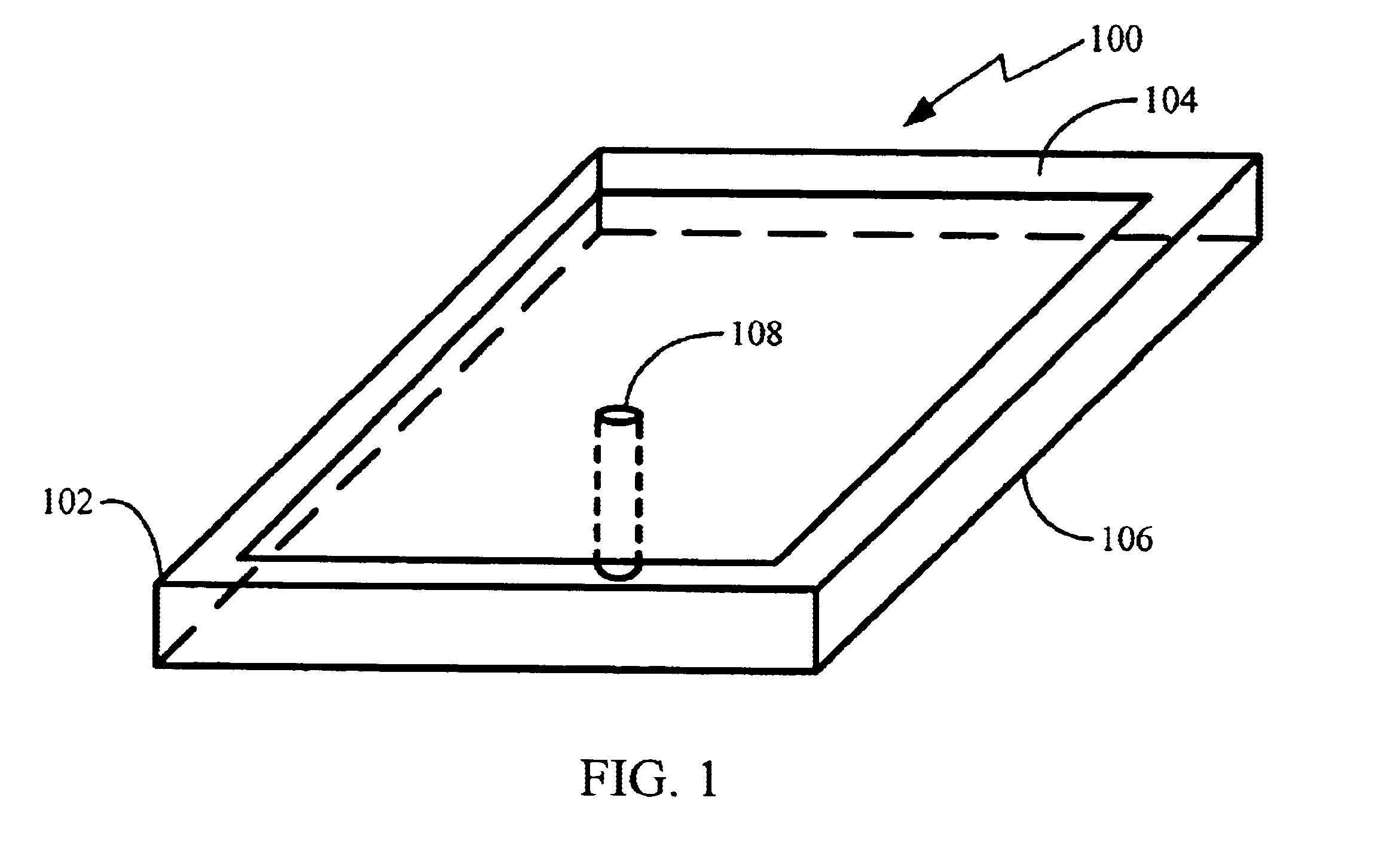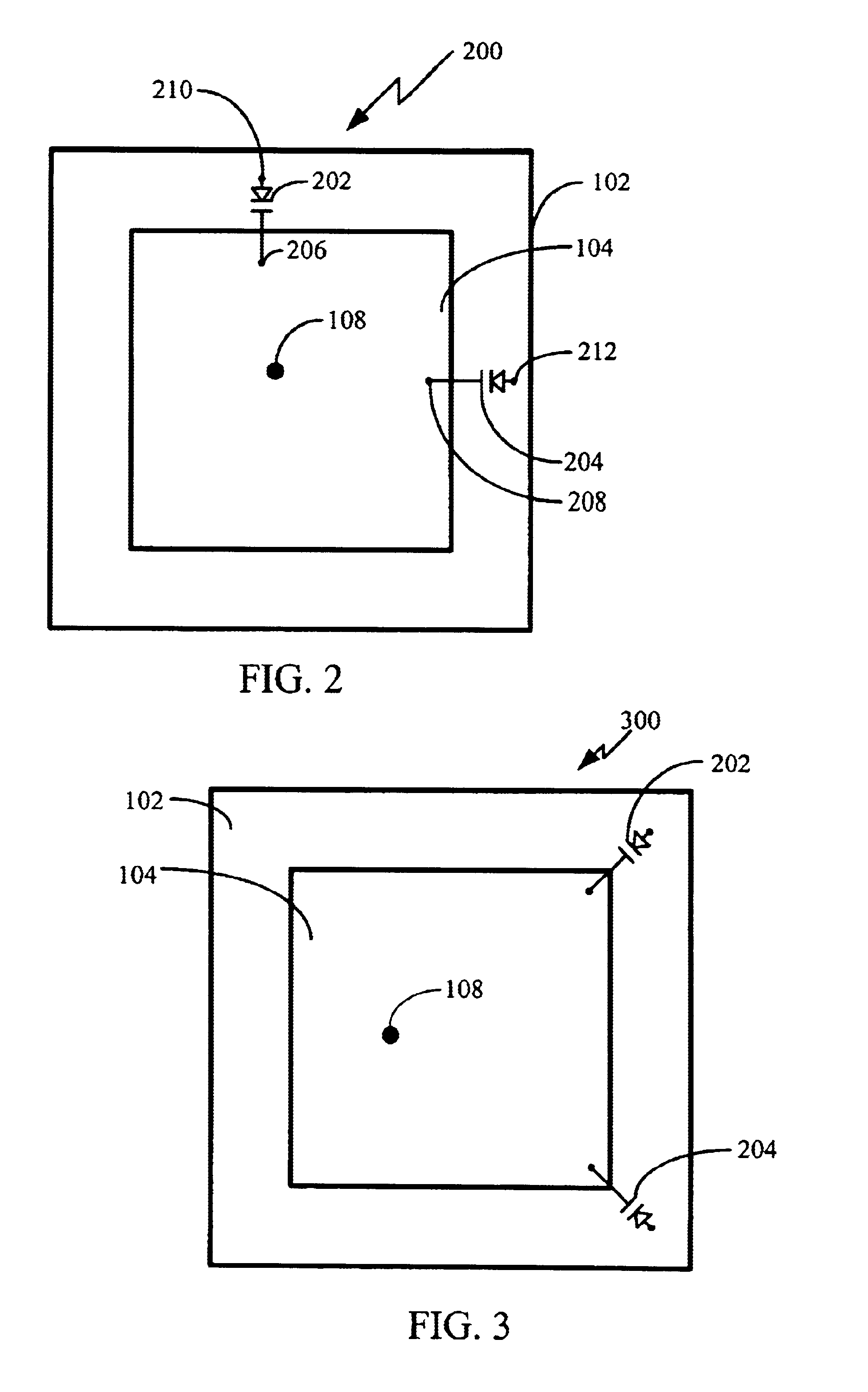Method and apparatus for optimally tuning a circularly polarized patch antenna after installation
a patch antenna and optimal tuning technology, applied in the direction of antennas, antenna details, basic electric elements, etc., can solve the problems of unusable rf electronic devices, communication link loss or unreliability, and implementation of these antennas
- Summary
- Abstract
- Description
- Claims
- Application Information
AI Technical Summary
Benefits of technology
Problems solved by technology
Method used
Image
Examples
Embodiment Construction
FIG. 1 illustrates a typical circularly polarized patch antenna. Antenna 100 comprises dielectric 102 with metal patch 104 deposited thereon. Bottom 106 of dielectric 102 is typically also metallized. Pin 108 is electrically connected to the metal patch 104, however, pin 108 is not electrically connected to the dielectric 102 or any metallization on the bottom 106. Pin 108 is typically metal, but can be any electrically conductive material.
In a typical application, the bottom 106 metalization is connected to an attached circuit ground, and pin 108 is connected to a low noise amplifier's input.
FIG. 2. illustrates a system in accordance with the present invention.
System 200 comprises varactors 202 and 204. Varactor 202 is electrically connected to metal patch 104 at point 206. Varactor 204 is electrically connected to metal patch 104 at point 208. Varactor 202 is electrically connected through the dielectric 102 to ground, which is typically the metallization on bottom 106, at point 2...
PUM
 Login to View More
Login to View More Abstract
Description
Claims
Application Information
 Login to View More
Login to View More - R&D
- Intellectual Property
- Life Sciences
- Materials
- Tech Scout
- Unparalleled Data Quality
- Higher Quality Content
- 60% Fewer Hallucinations
Browse by: Latest US Patents, China's latest patents, Technical Efficacy Thesaurus, Application Domain, Technology Topic, Popular Technical Reports.
© 2025 PatSnap. All rights reserved.Legal|Privacy policy|Modern Slavery Act Transparency Statement|Sitemap|About US| Contact US: help@patsnap.com



